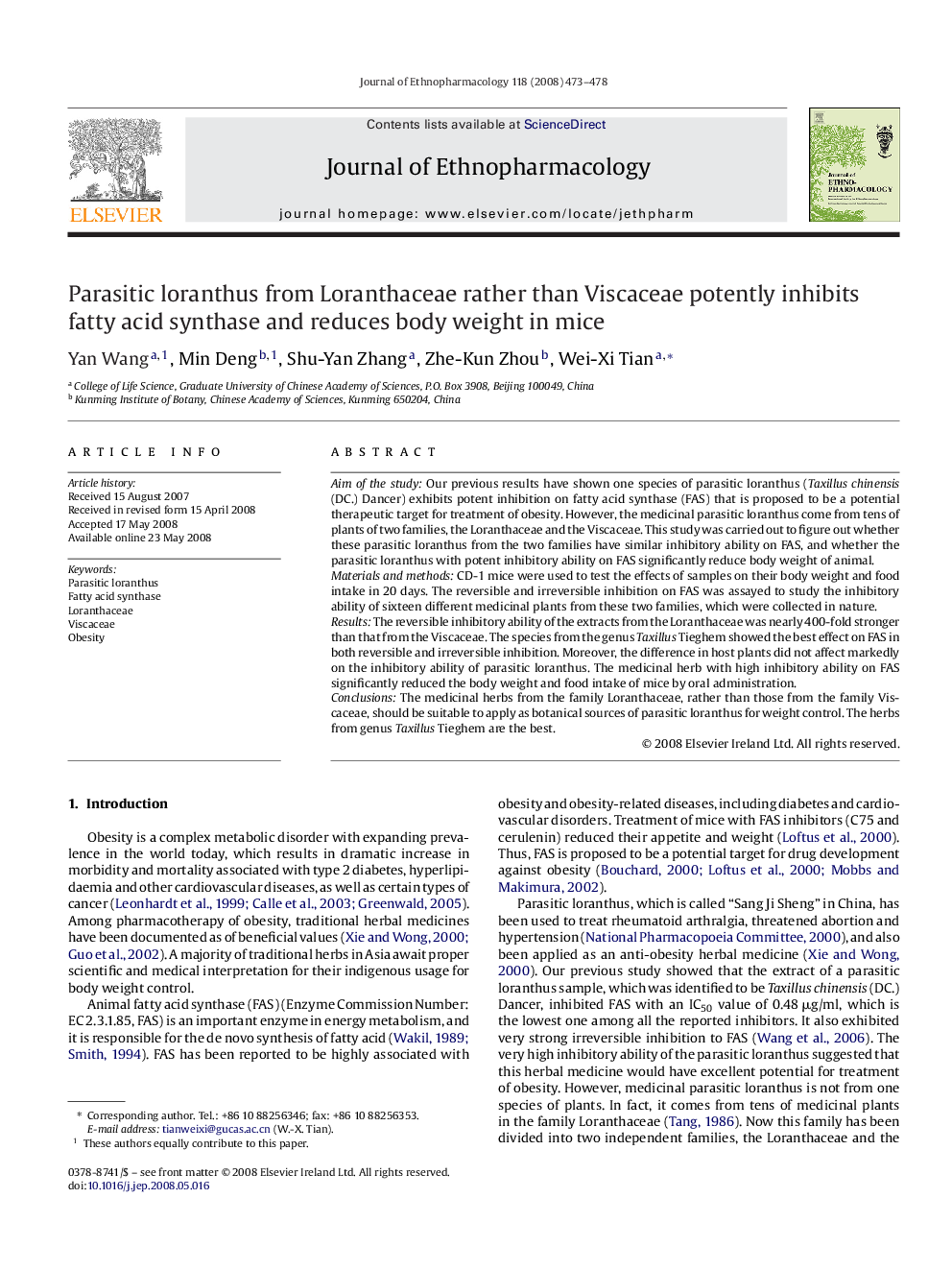| کد مقاله | کد نشریه | سال انتشار | مقاله انگلیسی | نسخه تمام متن |
|---|---|---|---|---|
| 2546773 | 1124035 | 2008 | 6 صفحه PDF | دانلود رایگان |

Aim of the studyOur previous results have shown one species of parasitic loranthus (Taxillus chinensis (DC.) Dancer) exhibits potent inhibition on fatty acid synthase (FAS) that is proposed to be a potential therapeutic target for treatment of obesity. However, the medicinal parasitic loranthus come from tens of plants of two families, the Loranthaceae and the Viscaceae. This study was carried out to figure out whether these parasitic loranthus from the two families have similar inhibitory ability on FAS, and whether the parasitic loranthus with potent inhibitory ability on FAS significantly reduce body weight of animal.Materials and methodsCD-1 mice were used to test the effects of samples on their body weight and food intake in 20 days. The reversible and irreversible inhibition on FAS was assayed to study the inhibitory ability of sixteen different medicinal plants from these two families, which were collected in nature.ResultsThe reversible inhibitory ability of the extracts from the Loranthaceae was nearly 400-fold stronger than that from the Viscaceae. The species from the genus Taxillus Tieghem showed the best effect on FAS in both reversible and irreversible inhibition. Moreover, the difference in host plants did not affect markedly on the inhibitory ability of parasitic loranthus. The medicinal herb with high inhibitory ability on FAS significantly reduced the body weight and food intake of mice by oral administration.ConclusionsThe medicinal herbs from the family Loranthaceae, rather than those from the family Viscaceae, should be suitable to apply as botanical sources of parasitic loranthus for weight control. The herbs from genus Taxillus Tieghem are the best.
Journal: Journal of Ethnopharmacology - Volume 118, Issue 3, 13 August 2008, Pages 473–478